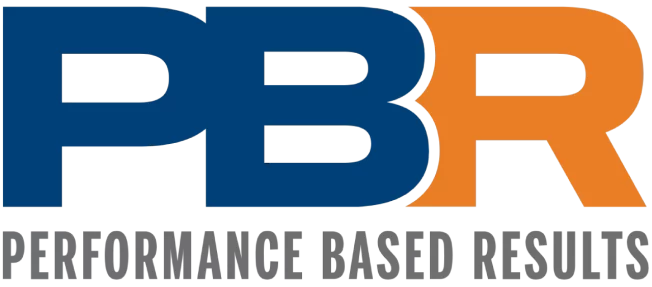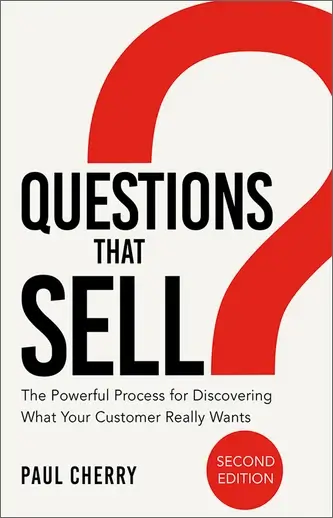Many salespeople struggle with the concept of check-in calls because, for them these interactions lack purpose. However, with the right approach, these calls can become valuable opportunities to build stronger relationships and drive sales. Instead of merely “checking in,” do your homework before making the call.
Understand your customer’s ongoing problems, future plans, unexpected challenges, or recent achievements.
Use this knowledge to initiate meaningful conversations. For instance, you might ask, “How are the plans for your new product launch going?” or “What are your thoughts on the recent industry trend?” These questions show that you’re invested in their success and can lead to deeper discussions about how you can support their business goals.
If you’re not familiar enough with the customer, utilize the Internet to gather relevant industry insights. This preparation transforms a routine check-in call into a strategic touchpoint that can enhance loyalty and drive increased sales.
The Problem with “Check-In” Calls
A lot of people can make the mistake of conducting “check-in” calls, thinking they’re maintaining relationships just by reaching out. Even though, calls that lack a clear purpose often lead to unproductive conversations and missed opportunities.
Customers seldom find value in a call that begins with, “I’m just checking in to see how things are going.” This approach can come across as bothersome, especially if the customer has nothing significant to discuss at that moment.
To make these calls more effective, thorough preparation is essential. Understand your customer’s current challenges, future plans, unexpected obstacles, or recent achievements. This insight enables you to ask specific, relevant questions like, “How are your preparations for the new project coming along?” or “What impact has the recent industry trend had on your business?” show that you are genuinely interested in their situation and ready to offer meaningful support.
Strategies to Avoid the “Check-In” Call
To avoid this issue, it’s essential to employ strategies that add real value to your interactions. Preparation is crucial—get to know your customer’s challenges, future plans, and recent successes. By posing thoughtful, relevant questions, you can elevate routine check-ins into impactful discussions that reinforce relationships and boost sales.
1. Identifying Ongoing Problems
One of the most effective ways to make your check-in calls valuable is by identifying and addressing ongoing problems your customers may be facing. Instead of making a generic call to “check-in,” take the time to understand the specific challenges your customer is dealing with. This requires thorough research and a deep understanding of their business and industry.
For instance, if a customer is struggling to fill open positions, you could ask, “How are you managing your staffing needs during this period?” By addressing a real issue, you show that you’re not just a salesperson but a partner invested in their success.
Additionally, using tools like a closing ratio calculator can help you measure the effectiveness of your tailored approach, ensuring that your solutions are not only relevant but also impactful.
This approach opens the door to meaningful conversations, allowing you to offer tailored solutions that can genuinely help them.
2. Understanding Future Plans
To make your check-in calls truly impactful, first, you need to understand your customer’s future plans. Instead of the usual “just checking in,” delve into what they are planning for the months or years ahead.
This strategy transforms a routine call into a strategic discussion. Begin by researching their industry and any recent developments that might influence their business.
Ask questions like, “What are your goals for the next quarter?” or “How are you preparing for the new product launch?” These inquiries show that you’re not just interested in the present but are invested in their long-term success.
Understanding their future plans allows you to tailor your solutions to meet their upcoming needs. If they’re planning to expand into a new market, for instance, you can offer insights and services that facilitate that expansion.
3. Recognizing Unexpected Challenges
Recognizing and addressing unexpected challenges can significantly enhance the value of your check-in calls. Instead of a generic “just checking in,” focusing on recent issues your customer might be facing shows that you’re attuned to their needs and ready to offer support.
Stay informed about their industry and any news that could impact their business. For example, if you know their new product just got delayed, you could ask, “How are you handling the recent product delay?” This not only shows your awareness but also opens the door to discussing how you can assist them during this challenging time.
By recognizing unexpected challenges, you demonstrate empathy and a proactive attitude. It helps build trust and positions you as a reliable partner who is ready to help navigate through difficulties.
4. Celebrating Achievements
By celebrating achievements with your clients, you show genuine interest and support in their business journey. For example, you might say, “Congratulations on securing the new client! How has this impacted your business strategy moving forward?” It’s about fostering a positive dialogue that reinforces their trust in you as a partner invested in their success.
When you make celebrations a part of your check-in strategy, you elevate these interactions beyond routine updates to meaningful exchanges that drive mutual benefit and long-term collaboration.
Preparing for the Call
Before making a check-in call, consider making a preparation. This step can significantly enhance the effectiveness of your communication. Research your customer’s current challenges, recent achievements, and upcoming plans.
This knowledge allows you to initiate informed conversations that add value and demonstrate your commitment to their success. Comprehending their specific needs and concerns, you can tailor your approach and offer relevant solutions during the call.
Research the Customer
Researching your customer before a check-in call will help you maximize its impact. By understanding their industry, current challenges, and recent developments, you can tailor your approach to their specific needs.
This preparation allows you to ask insightful questions that demonstrate your interest and expertise, such as inquiring about their latest initiatives or how recent industry trends are affecting their business.
You’ll build trust and credibility during the call by demonstrating that you are well-informed and attentive to their concerns. This proactive approach enhances your relationship and establishes you as a valuable partner who can offer customized solutions.
Ultimately, thorough research ensures that your check-in calls are productive and contribute positively to both customer satisfaction and sales growth.
Set Clear Objectives
Define what you aim to accomplish during the call, whether it’s gathering specific information, addressing a particular issue, or deepening the relationship. Clear objectives help you stay focused and ensure that the conversation remains purposeful and productive.
Start by reviewing previous interactions and identifying any unresolved issues or opportunities for further discussion. Then, outline key points or questions you want to cover to achieve your objectives effectively.
Setting clear objectives helps guide the conversation towards practical outcomes that are beneficial for both parties involved.
It shows your commitment to understanding their needs and finding solutions, ultimately strengthening your position as a trusted advisor and driving towards mutual success.
Gather Relevant Data
Before engaging in a check-in call, gathering relevant data is an important step to ensure that the conversation is productive and meaningful. Start by reviewing past interactions and any notes or records related to the customer.
This helps you understand their history, preferences, and any ongoing issues. Additionally, research recent industry trends or news that could impact their business. This information allows you to ask informed questions and offer insights relevant to their current challenges or opportunities.
Gathering pertinent data showcases your readiness and demonstrates to the customer that you prioritize their time and business.
Effective Conversation Starters
Starting a check-in call with effective conversation starters is essential to captivate your customer right from the beginning. Begin by referencing a recent interaction or event, such as a previous meeting or a recent accomplishment they shared.
This shows attentiveness and encourages a positive tone for the conversation. Another approach is to ask about their current projects or challenges they might be facing. For example, inquire about progress on a recent initiative or ask how they are navigating industry changes.
By initiating the discussion with a pertinent and captivating introduction, you lay the groundwork for a fruitful conversation that enhances relationships and creates sales opportunities.
Drawing inspiration from sales motivational speakers, you can incorporate motivational elements and effective communication strategies to make your introduction even more compelling and engaging.
Maintaining Long-Term Engagement
Sustaining long-term engagement involves consistently nurturing relationships through effective communication and personalized check-in calls. These calls should go beyond routine updates to address evolving needs and offer proactive solutions, fostering trust and loyalty over time.
1. Regular Follow-Ups
Regular follow-up calls are integral to maintaining strong relationships and driving sales growth. These check-ins demonstrate an ongoing commitment to customer satisfaction and allow you to address any emerging issues promptly.
Scheduling consistent follow-ups keeps you updated on changes in their needs and business landscape, allowing you to provide timely solutions and support. This proactive technique ensures you can address emerging issues promptly and maintain a strong partnership.
Additionally, these calls provide opportunities to reinforce the value of your products or services, ensuring they align with their evolving requirements. Effective follow-up strategies not only cultivate trust and loyalty but also demonstrate your dedication as a proactive partner committed to their success.
2. Personalized Communication
Personalized communication during check-in calls is key to building strong customer relationships and driving sales effectiveness. Tailoring your approach to each customer’s specific needs and preferences shows that you value their unique situation.
Start by referencing previous interactions or specific challenges they’ve faced, demonstrating your understanding and commitment to their success. Ask thoughtful questions that delve into their current objectives or upcoming projects, showing genuine interest in their business priorities.
This strategy strengthens your relationship and establishes you as a reliable advisor capable of providing customized solutions.
3. Leveraging Technology
Leveraging technology can significantly enhance the effectiveness of your check-in calls. By utilizing customer relationship management (CRM) systems, you can keep track of all interactions, preferences, and past issues, ensuring that every call is informed and personalized.
CRM systems can provide valuable insights into customer behavior and help identify potential opportunities for engagement. Also, using video conferencing tools can create a more personal connection than traditional phone calls, allowing you to build stronger relationships with customers.
Screen-sharing capabilities enable you to present data, demonstrate products, and discuss solutions in real-time, making your calls more interactive and impactful. Automated scheduling tools can also streamline the process, ensuring regular and timely check-ins without the hassle of manual planning.
4. Offering Valuable Resources
Offering valuable resources during check-in calls can significantly enhance your relationship with customers and demonstrate your commitment to their success. Begin by understanding their specific needs and challenges.
This instruction allows you to provide targeted resources, such as industry reports, whitepapers, case studies, or relevant articles that address their concerns or interests. Sharing insights and best practices tailored to their business demonstrates your investment in their success and positions you as a knowledgeable and helpful partner.
For example, if a customer is struggling with a particular industry trend, you can offer resources that provide strategies for overcoming similar challenges. Also, providing access to webinars, training sessions, or exclusive events can further showcase your dedication to their growth.
5. Seeking Feedback
Asking for feedback shows that you value your customer’s opinions and are committed to meeting their needs. Start by inquiring about their experience with your products or services, and ask specific questions about areas where you can improve.
This method assists in identifying potential issues while also providing valuable insights into areas where success is evident. Moreover, discussing feedback openly allows customers to feel heard and valued, strengthening your relationship with them.
Use the information gathered to make necessary adjustments and demonstrate that their input directly influences your actions. Besides, follow up on any feedback they provide, showing that you take their suggestions seriously and are dedicated to enhancing their experience.
Conclusion
In conclusion, mastering the art of check-in calls is pivotal for sales success. These calls serve as more than just updates. They are opportunities to demonstrate expertise, understand client needs deeply, and align solutions with their objectives.
Embracing these strategies not only enhances customer satisfaction but also positions sales teams as proactive partners invested in their client’s success. Ultimately, a well-executed check-in call strategy can lead to increased sales, improved client retention, and a reputation for exceptional service and reliability in the competitive market landscape.






